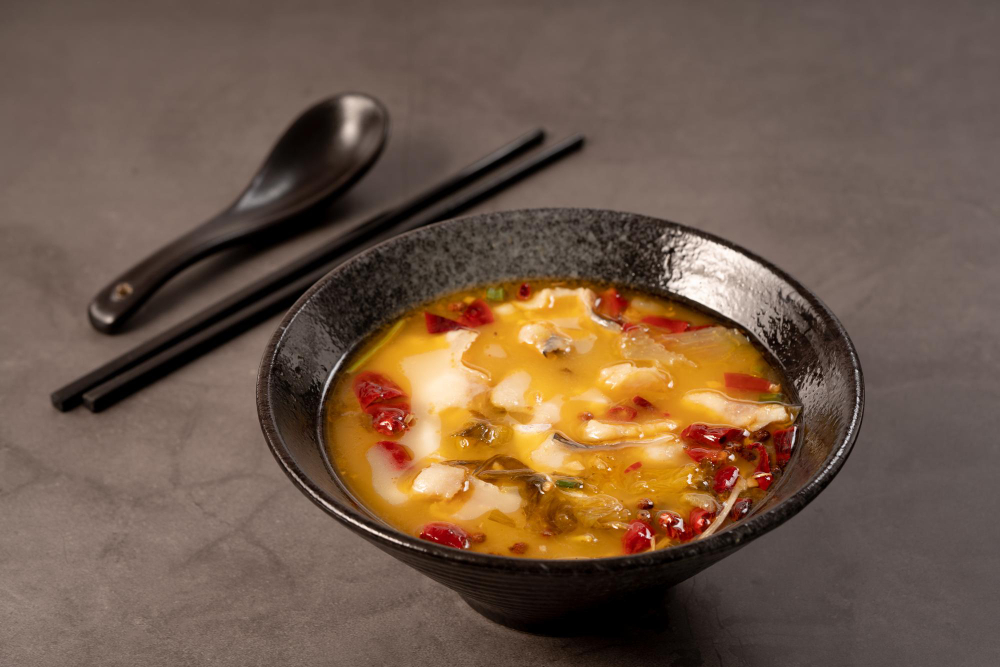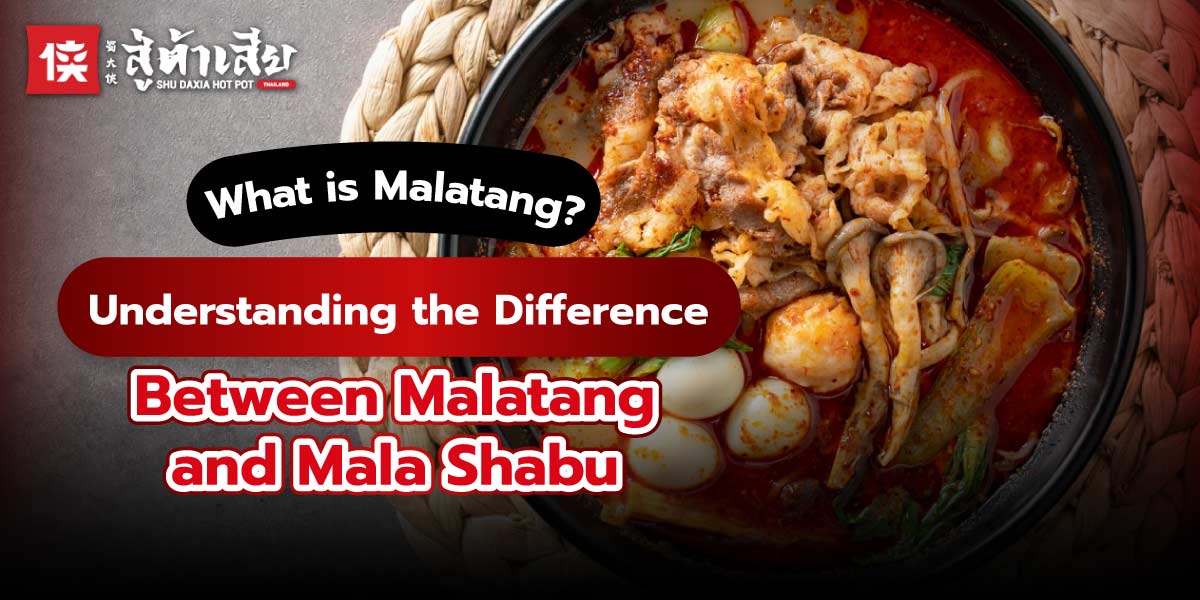If you’ve recently discovered the fiery world of mala cuisine, you might find yourself wondering: What exactly is Malatang? And how does it differ from Mala Shabu?
With its bold, numbing heat and exciting variety of ingredients, mala has become an undeniable favorite among spicy food lovers in Thailand. From mala hotpot to mala barbecue skewers, mala sukiyaki, and today’s focus — Malatang — there’s a style to suit every taste.
In this article, we’ll introduce you to Malatang, a popular street food sensation from China, and explain how it differs from mala shabu, helping you decide which spicy dining experience is right for you!
What is Malatang? A Spicy Delight from Sichuan

Malatang, pronounced either as “Mala Tang” or “Mala Thung,” is a beloved Chinese street food that originated in Sichuan province. Traditionally, Malatang is a quick, casual dish enjoyed on the go. In Thailand, it’s commonly known as “pick-your-own mala” or “mala by weight.”
The concept of Malatang is delightfully simple yet versatile: diners handpick their favorite ingredients from a wide selection, and the vendor cooks them in a signature mala broth, serving them piping hot in a single bowl.
What makes Malatang so enjoyable is the freedom to customize your meal. Today, many Malatang shops in Thailand have adapted their offerings to suit local palates, with a wide range of proteins, vegetables, and noodles, including:
- Pork belly / sliced pork collar
- Sliced beef
- Chicken
- Pork liver / pork lung
- Duck intestines
- Quail eggs
- Assorted meatballs (pork, beef, fish, shrimp, shiitake)
- Sausages
- Potatoes
- Mushrooms (king oyster, shiitake, enoki)
- Bean curd sheets
- Lotus root
- Chinese cabbage / morning glory / bok choy / iceberg lettuce
- Sweet potato noodles / konjac noodles / instant noodles / glass noodles / udon
- Tripe
Beyond the ingredients, a variety of mala dipping sauces and seasonings add layers of flavor to complement the spicy, numbing mala broth. Popular choices include classic mala sauce, sesame peanut sauce, spicy peanut sauce, sesame paste sauce, and even mala-style sukiyaki sauce for those who prefer a slightly sweet and tangy profile.
Malatang vs. Mala Shabu: What’s the Difference?
Both Malatang and Mala Shabu feature the unmistakable Sichuan mala spice, known for its intense heat and tongue-numbing sensation. While they share many similarities, there are a few key differences that set them apart:
1. Dining Style
Malatang is a self-service experience where you select your desired ingredients, which are then cooked and served in a single bowl of rich mala broth. In contrast, Mala Shabu is similar to traditional shabu-shabu or hotpot — diners order set meals or choose items from the menu and cook them themselves at the table.
2. Broth Intensity
The broth in Malatang tends to be more concentrated, bold, and fragrant, with a robust kick of spices and chili heat that makes the dish deeply aromatic. Mala Shabu, however, uses a lighter broth that allows for additional seasoning and is well-suited for cooking various meats and vegetables without overpowering their natural flavors.
3. Pricing Structure
Malatang pricing is based on weight — the more you pick, the higher the price. It’s a flexible, pay-as-you-choose system. In contrast, Mala Shabu typically offers either buffet pricing or à la carte menu options, providing more structured meal packages.
Why Malatang is Gaining Popularity in Thailand
In recent years, there has been a growing appetite for international cuisine in Thailand, and mala has captured the hearts of local food lovers. Thais naturally gravitate toward spicy flavors, making the numbing, fiery allure of mala dishes an instant hit.
The widespread presence of mala options at street food stalls, night markets, and specialty restaurants — especially Malatang, mala skewers, and mala shabu — is a testament to its rising popularity. Diners enjoy the thrill of customizing their meals, experimenting with spice levels, and exploring new flavor combinations.
For those looking to indulge in an authentic mala hotpot experience, Shu Daxia is a top recommendation. As a premium mala restaurant in the heart of Bangkok, Shu Daxia imports high-quality ingredients directly from Chengdu, China, and is ranked among the top five mala hotpot brands in the country. With their meticulous attention to detail and outstanding service, Shu Daxia guarantees an unforgettable dining experience.
Conclusion
Malatang offers a convenient and customizable way to enjoy the bold flavors of Sichuan cuisine, allowing diners to select their preferred ingredients and pay by weight. While both Malatang and Mala Shabu share the same spicy, numbing allure, they differ in dining style, broth intensity, and pricing models.
Whichever option you choose, you’re sure to experience the mouth-tingling heat and irresistible flavor that makes mala cuisine so beloved. Whether you’re cooking at home or dining out at a top-tier mala restaurant in Bangkok, your next mala adventure awaits!
